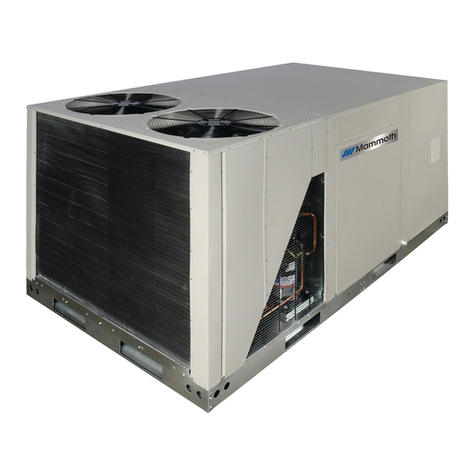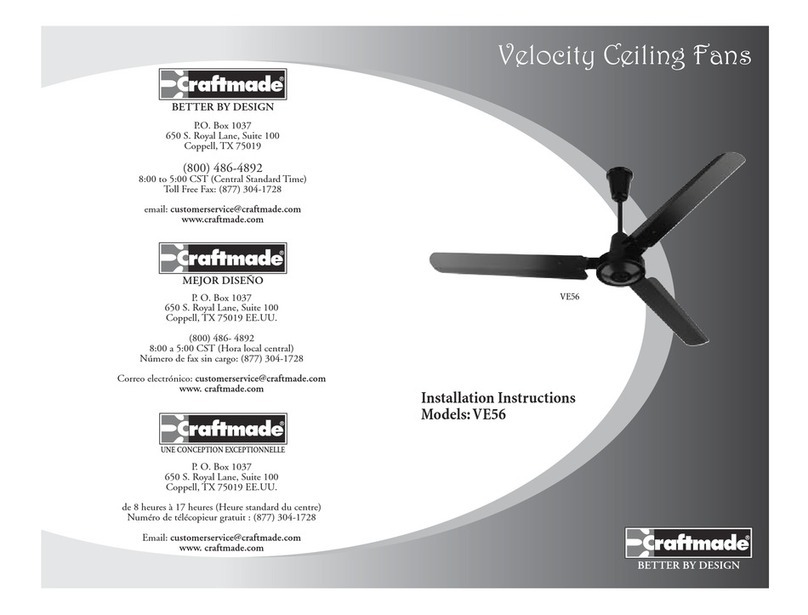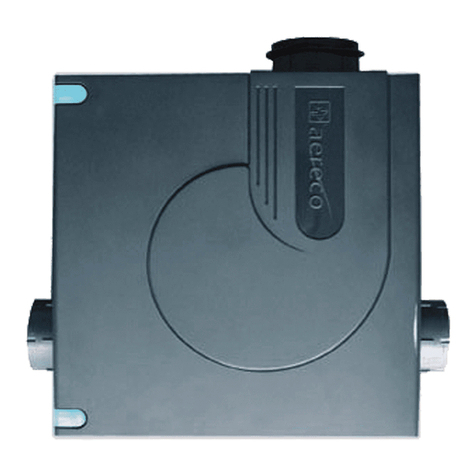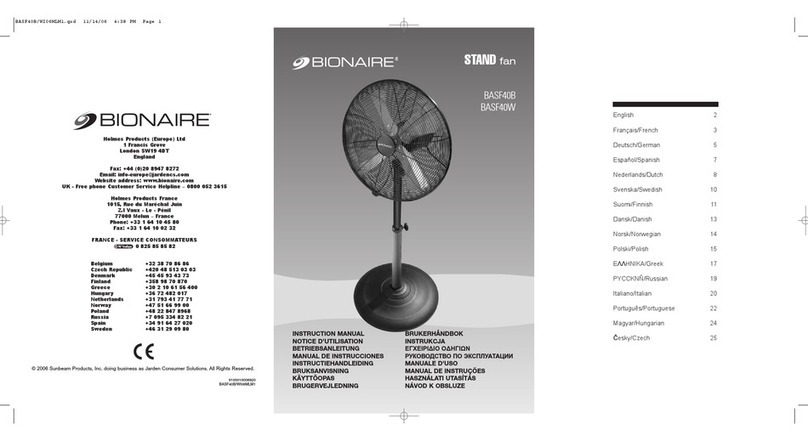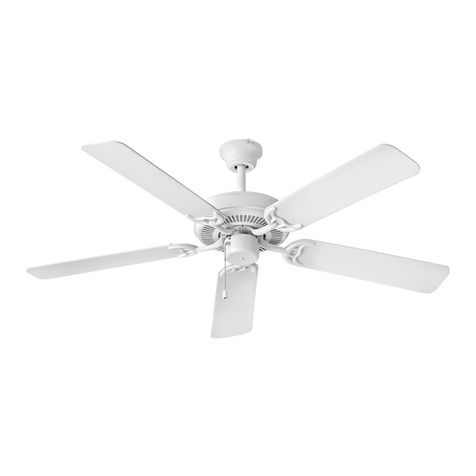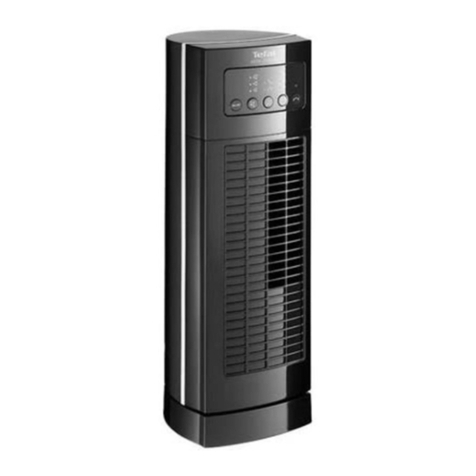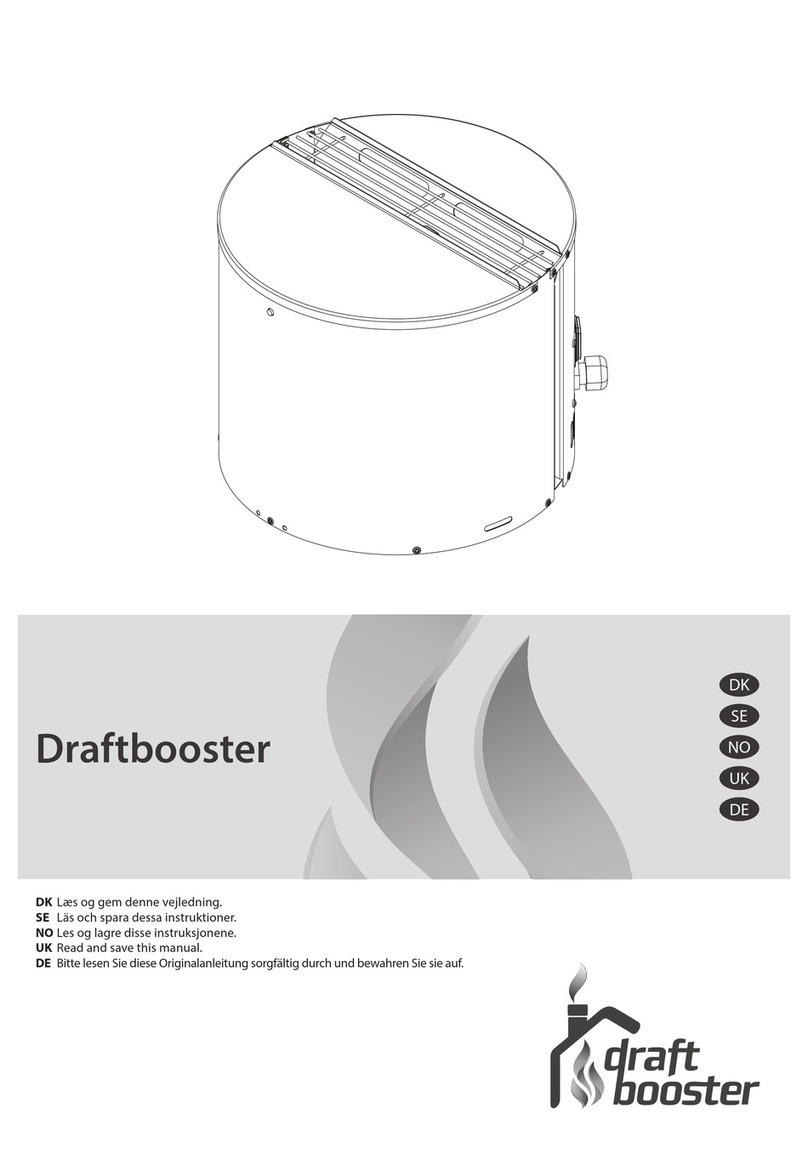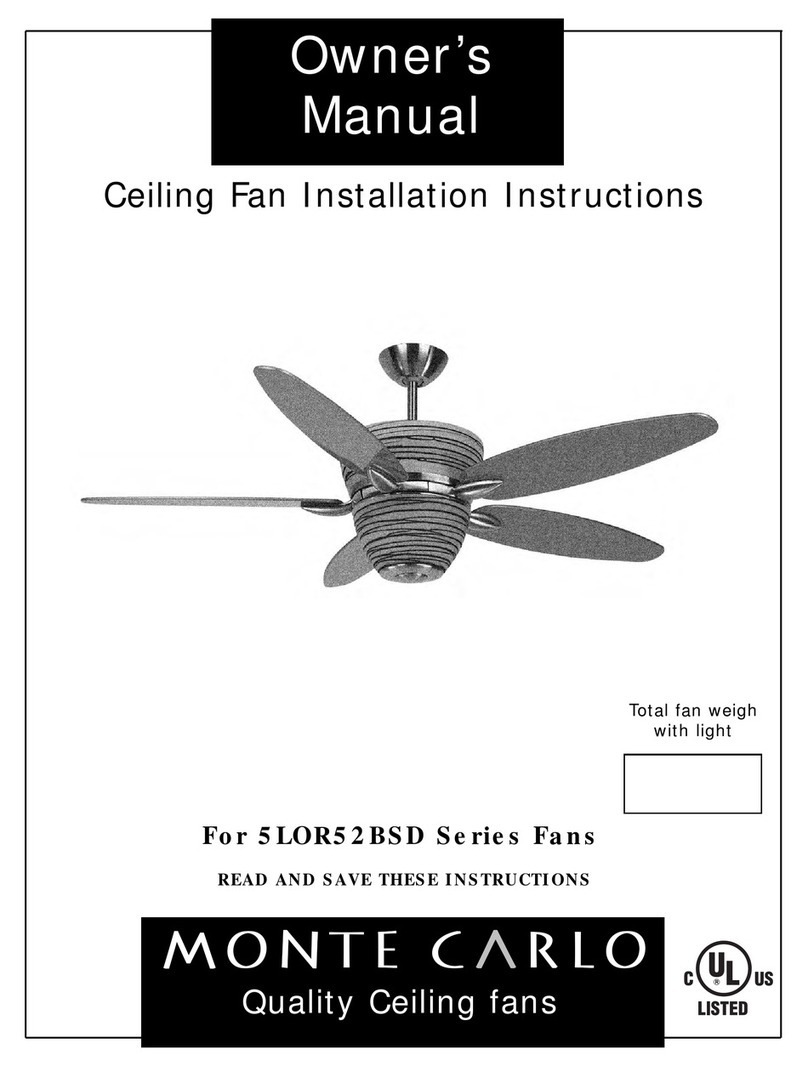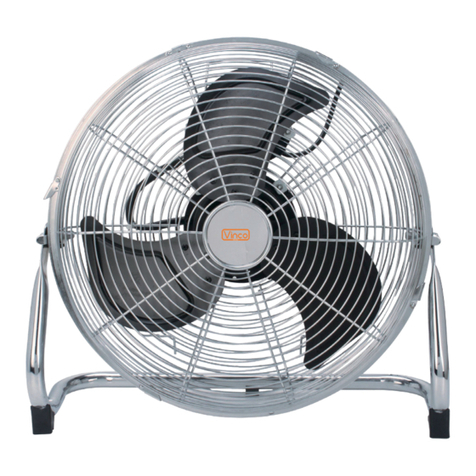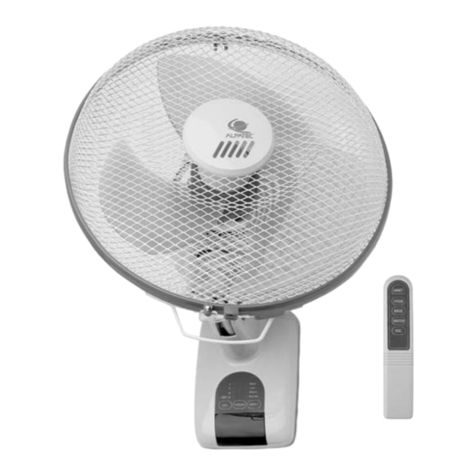Nordyne R8HE Series User manual

14 SEER / 95% AFUE
GROUND MOUNT - SINGLE PACKAGE GAS HEATING / ELECTRIC COOLING
R8HE / PPG3HE SERIES
INSTALLATION INSTRUCTIONS
WARNING / AVERTISSEMENT
FIRE OR EXPLOSION HAZARD
•Failure to follow safety warnings exactly
couldresultinseriousinjuryorproperty
damage.
•Installationandservicemustbeperformed
byaqualiedinstaller,serviceagencyor
thegassupplier.
•Do not store or use gasoline or other
ammablevaporsandliquidsinthevicinity
ofthisoranyotherappliance.
WHATTO DO IFYOU SMELL GAS
•Donottrytolightanyappliance.
•Donottouchanyelectricalswitch;donot
useanyphoneinyourbuilding.
•Leavethebuildingimmediately.
•Immediatelycallyourgassupplierfroma
neighborsphone.Followthegassuppliers
instructions.
•Ifyoucannotreachyourgassupplier,call
theredepartment.
RISQUE D’INCENDIE OU D’EXPLOSION
•Lenon-respectdesavertissementsdesécurité
pourraitentraînerdesblessuresgraves,lamort
oudesdommagesmatériels.
•L’installationetl’entretiendoiventêtreeffectués
par un installateur qualié, un organisme de
serviceoulefournisseurdegazstaller,service
agencyorthegassupplier.
•Ne pas entreposer ni utiliser de l’essence ni
d’autresvapeursouliquidesinammablesdansle
voisinagedecetappareil,nidetoutautreappareil.
QUE FAIRE S’ILY A UNE ODEUR DE GAZ
•Nepastenterd’allumeraucunappareil.
•Ne toucher à aucun interrupteur électrique;
n’utiliseraucuntéléphonedanslebâtiment.
•Évacuerl’immeubleimmédiatement.
•Appelerimmédiatementlefournisseurdegazen
employantletéléphoned’unvoisin.Respecterà
lalettrelesinstructionsdufournisseurdegaz.
•Sipersonnenerépond,appelerleservicedes
incendies.
DONOTDESTROY.PLEASEREADCAREFULLY&KEEPINASAFEPLACEFORFUTUREREFERENCE.

2
TABLE OF CONTENTS
IMPORTANT SAFETY INFORMATION..................... 3
REQUIREMENTS&CODES..................................... 4
GENERAL INFORMATION........................................ 5
Before you install this unit............................................5
Locating the Equipment ...............................................5
Heating Load................................................................5
COMBUSTIONAIR&VENTINGREQUIREMENTS. . 6
Vent Termination ..........................................................6
CIRCULATING AIR SUPPLY..................................... 7
Air Ducts.......................................................................7
Air Filter Requirements ................................................7
Unconditioned Spaces.................................................7
Acoustical Duct Work...................................................7
UNIT INSTALLATION................................................ 8
Packaging Removal .....................................................8
Rigging & Hoisting........................................................8
Clearances to Combustible Materials..........................8
Ground Level................................................................8
Condensate Drain (Air Conditioning)...........................8
ELECTRICALWIRING............................................... 9
Pre-Electrical Checklist................................................9
Grounding.....................................................................9
Line Voltage .................................................................9
Thermostat / Low Voltage Connections.......................10
2-Stage Heat / 1-Stage Cool Thermostat .................10
Single Stage Heat / Single Stage Cool Thermostat..10
Checking Heat Anticipator Settings..........................10
Cooling Configurations.................................................10
Heating Configurations.................................................10
Blower Speed...............................................................10
Configuring the Fixed Speed Blower ........................10
Selecting Cooling Airflow..........................................11
Selecting Heating Airflow..........................................11
Dehumidification Options.............................................11
Optional Furnace Control Board Connections.............11
Electronic Air Cleaner...............................................11
Humidifier..................................................................11
GASSUPPLY&PIPING............................................ 12
Leak Check ..................................................................12
High Altitude Conversion - Natural Gas.......................13
LP / Propane Gas Conversion .....................................13
STARTUP&ADJUSTMENTS.................................. 15
Pre-Start Check List.....................................................15
Start-Up Procedure......................................................15
Air Circulation ...........................................................15
Lighting the Appliance ..............................................15
Verifying System Heating..........................................16
Verifying & Adjusting Temperature Rise....................16
Gas Supply Pressure Verification & Adjustment.......16
Verifying the Firing Rate of the Appliance.................16
Measuring the Manifold Pressure.............................17
Adjusting the Manifold Pressure...............................17
Removing the Manometer/Pressure Gauge.............17
Verifying Over-Temperature Limit Control Operation17
Verifying Burner Operation.......................................18
Verifying System Cooling..........................................18
OPERATING SEQUENCE......................................... 19
Heating Mode...............................................................19
Thaw Cycle Start Up / Shutdown.................................20
Blocked Vent / Condensate Disposal Shut Down........20
Cooling Mode - Single Stage Operation......................20
De-Humidification Control............................................20
Fan Mode.....................................................................20
COMPONENT FUNCTIONS...................................... 20
EQUIPMENT MAINTENANCE................................... 21
Heat Exchanger & Burner Maintenance ......................21
Cleaning of Burners .....................................................22
TROUBLESHOOTING............................................... 22
Cooling Mode...............................................................22
Heating Mode...............................................................22
FIGURES&TABLES................................................. 23
Figure 7. Unit Dimensions.........................................23
Table 7. Center of Gravity & Shipping Weights.........23
AirowInformation.....................................................24
Table 8.Cooling Airflow Settings...............................24
Table 9.Heating Airflow Settings..............................24
Table 10. Blower Performance - 2 & 2.5 Ton.............25
Table 11. Blower Performance - 3 Ton ......................26
Table 12. Blower Performance - 3.5 Ton ...................27
Table 13. Blower Performance - 4 & 5 Ton................28
GasInformation..........................................................29
Table 14. Gas Pipe Capaacities................................29
Table 15. Gas Flow Rates.........................................29
Figure 8. Gas Valve Label.........................................30
ElectricalData&Diagrams........................................31
Table 16. Electrical Data...........................................31
Table 17. Copper Wire Size ......................................31
Table 18.Thermostat Wire Gauge ............................31
Figure 9.Two Stage Heating / Single Stage
Cooling Configuration...............................................31
Figure 10. Fixed Speed Motor Control Board ...........31
Figure 11. Ignition Control Board - 624809...............31
Figure 12.Wiring Diagram........................................32
ChargingCharts.........................................................33
Figure 13. Charging Chart for 2 Ton Units ................33
Figure 14. Charging Chart for 2.5 Ton Units .............33
Figure 15. Charging Chart for 3 Ton Units ................34
Figure 16. Charging Chart for 3.5 Ton Units .............34
Figure 17. Charging Chart for 4 Ton Units ................35
Figure 18. Charging Chart for 5 Ton Units ................35
APPENDIX - HEAT EXCHANGER CONDENSATE
DRAIN&VENTSYSTEM.......................................... 36
Vent Pipe & Drain Hose Assembly...............................36
Vertical Drain Pit Method .............................................36
Preparing the pit .......................................................37
Percolation Test (Optional)........................................37
Vertical Drain Pipe Installation..................................37
Horizontal Drain Trench Method ..................................37
Preparing the Trench ................................................38
Horizontal Drain Pipe Installation..............................38
Completing the Vent Installation ..................................38
REPLACEMENT PARTS............................................ 38
INSTALLATION / PERFORMANCE CHECK LIST.... 40

3
IMPORTANT SAFETY INFORMATION
Pleasereadallinstructionsbeforeservicingthisequipment.
Payattention to all safety warningsand any other special
notes highlighted in the manual. Safety markings are
used frequently throughout this manual to designate a
degreeorlevelofseriousnessandshouldnotbeignored.
WARNINGindicatesapotentiallyhazardoussituationthat
if not avoided, could result in personal injury or death.
CAUTIONindicatesapotentiallyhazardoussituationthat
if not avoided, may result in minor or moderate injury or
property damage.
WARNING:
ELECTRICALSHOCK,FIREOR
EXPLOSION HAZARD
Failuretofollowsafetywarningsexactlycould
resultinseriousinjuryorpropertydamage.
Improper servicing could result in dangerous
operation, serious injury, death or property
damage.
• Beforeservicing,disconnectallelectricalpower
totheunit.
• Whenservicingcontrols,labelallwiresprior
todisconnecting.Reconnectwirescorrectly.
• Verifyproperoperationafterservicing.
WARNING:
These units are fully charged with R-410A
refrigerant and ready for installation. When
a system is installed according to these
instructions,norefrigerantchargingisrequired.
Ifrepairsmakeitnecessaryforevacuationand
charging,itshouldonlybeattemptedbyqualied,
trainedpersonnelthoroughlyfamiliarwiththis
equipment.Somelocalcodesrequirelicensed
installation service personnel to service this
type of equipment. Under no circumstances
shouldthehomeownerattempttoinstalland/or
servicethisequipment.Failuretocomplywith
thiswarningcouldresultinequipmentdamage,
personalinjury,ordeath.
WARNING:
Donotplacecombustiblematerialonoragainst
the unit cabinet. Do not place combustible
materials, including gasoline and any other
ammablevaporsandliquids,inthevicinityof
theunit.
WARNING:
PROPOSITION 65 WARNING: This product
contains berglass insulation. Disturbing the
insulation of this product during installation,
maintenance, or repair may expose you to
berglassinsulation.
• Breathingthismaterialmaycauserespiratory
irritations.
• Fiberglass insulation may also cause eye
irritation,skinsensitization,orotherallergic
responsesinsusceptibleindividuals.
• Always wear goggles, disposable gloves,
longsleevedshirt,andappropriatebreathing
protectionwhenworkingnearthisinsulation.
Ifcontactwithskinoccurs,washimmediately
withsoapandwater.Incaseofcontactwith
eyes,ushimmediatelywithwaterforatleast
15minutes.Contactaphysicianifneeded.
WARNING:
The information listed below and on the next
pagemustbefollowedduringtheinstallation,
service,andoperationofthisunit.Unqualied
individualsshouldnotattempttointerpretthese
instructions or install this equipment. Failure
tofollowsafetyrecommendationscouldresult
inpossibledamagetotheequipment,serious
personalinjuryordeath.
• Before beginning the installation, verify that the unit
model is correct for the job. The unit model number
is printed on the data label. Follow all precautions in
the literature, on tags, and on labels provided with
the equipment. Read and thoroughly understand
the instructions provided with the equipment prior to
performing the installation and operational checkout
of the equipment.
• Never test for gas leaks with an open ame. Use
a commercially available soap solution to check all
connections. See page 12.
• Installationofequipmentmayrequirebrazingoperations.
Installer must comply with safety codes and wear
appropriate safety equipment (safety glasses, work
gloves,fireextinguisher,etc.)whenperformingbrazing
operations.
• ThisequipmentisNOTtobeusedfortemporaryheating
of buildings or structures under construction.
• Usecautionwhenhandlingthisapplianceorremoving
components.Personalinjurycanoccurfromsharpmetal
edgespresentinallsheetmetalconstructedequipment.
• Follow all precautions in the literature, on tags, and
on labels provided with the equipment. Read and
thoroughly understand the instructions provided with
the equipment prior to performing the installation and
operational checkout of the equipment.

4
• Theinstallershouldbecomefamiliarwiththeunitswiring
diagrambeforemakinganyelectricalconnectionstothe
unit. See the unit wiring label or Figure 12 (page 32).
REQUIREMENTS&CODES
• Thisequipmentmustbeinstalledinaccordancewith
instructionsoutlinedinthismanual,allapplicable
localbuilding codes,andthe current revisionof
theNationalFuelGasCode(NFPA54/ANSIZ223.1)
ortheNaturalGasandPropaneInstallationCode,
CAN/CGAB149.1.
• Allelectricalwiringmustbecompletedinaccordance
with local, state and national codes and regulations
and with the National Electric Code (ANSI/NFPA 70)
or in Canada the Canadian Electric Code Part 1 CSA
C.22.1.
• The installer must comply with all local codes and
regulations which govern the installation of this type
of equipment. Local codes and regulations take
precedence over any recommendations contained in
theseinstructions.Consultlocalbuildingcodesandthe
NationalElectricalCode(ANSICI)forspecialinstallation
requirements.
• Thisequipmentcontainsliquidandgaseousrefrigerant
underhighpressure.Installationorservicingshouldonly
beperformedbyqualifiedtrainedpersonnelthoroughly
familiar with this type equipment.
• Installthisunitonlyinalocationandpositionasspecied
on page 5. This unit is designed only for outdoor
installations and should be located with consideration
of minimizing the length of the supply and return ducts.
Consideration should also be given to the accessibility
of fuel, electric power, service access, noise, shade,
and drainage for the units heat exchanger condensate
drainage pit.
• Air Ducts must be installed in accordance with the
standards of the National Fire Protection Association
“Standards for Installation of Air Conditioning and
Ventilation Systems” (NFPA 90A), “Standard for
InstallationofResidenceTypeWarmAirHeatingandAir
ConditioningSystems”(NFPA90B),theseinstructions,
andallapplicablelocalcodes.Seepage7foradditional
information.
• Consult Tables 8-13 (pages 24-28), and the rating
platefortheproper circulating air flow and temperature
rise. It is important that the duct system be designed
to provide the correct flow rates and external pressure
rise. An improperly designed duct system can result in
nuisance shutdowns, and comfort or noise issues.
• Useonlywiththe typeofgasapprovedforthis unit.
Refer to the unit rating plate.
• Provideadequatecombustionandventilationairtothe
unit. See page 6.
• Provideadequateclearancesaroundthecombustion
air intake louvers. See Figure 1 (page 5).
• Combustion products must be discharged outdoors.
Connect this unit to an approved vent system only, as
specifiedonpage6andintheAppendix(pages36-38).
• Theinformationlistedbelowisforreferencepurposes
only and does not necessarily have jurisdiction over
localorstatecodes.Alwaysconsultwithlocalauthorities
before installing any gas appliance.
Combustion&VentilationAir
• US:NationalFuelGasCode(NFGC),AirforCombustion
and Ventilation
• CANADA:NaturalGasandPropaneInstallationCodes
(NSCNGPIC), Venting Systems and Air Supply for
Appliances
DuctSystems
• US and CANADA: Air Conditioning Contractors
Association (ACCA) Manual D, Sheet Metal and
Air Conditioning Contractors National Association
(SMACNA), or American Society of Heating,
Refrigeration,andAirConditioningEngineers(ASHRAE)
Fundamentals Handbook
ElectricalConnections
• US:NationalElectricalCode(NEC)ANSI/NFPA70
• CANADA:CanadianElectricalCodeCSAC22.1
GasPiping&GasPipePressureTesting
• US:NFGCandNationalPlumbingCodes
• CANADA:NSCNGPIC
GeneralInstallation
• US:CurrenteditionoftheNFGCandtheNFPA90B.For
copies,contacttheNationalFireProtectionAssociation
Inc.,BatterymarchPark,Quincy,MA02269;orAmerican
GasAssociation,400N.Capitol,N.W.,WashingtonDC
20001 or www.NFPA.org
• CANADA:NSCNGPIC.Foracopy,contactStandard
Sales, CSA International, 178 Rexdale Boulevard,
Etobicoke (Toronto), Ontario, M9W 1R3 Canada
Safety
• US: (NFGC) NFPA 54–1999/ANSI Z223.1 and the
Installation Standards, Warm Air Heating and Air
Conditioning Systems ANSI/NFPA 90B.
• CANADA: CAN/CGA-B149.1 and .2–M00 National
Standard of Canada. (NSCNGPIC)

5
GENERAL INFORMATION
ThisSinglePackageGasHeating/ElectricCoolingUnitis
designedonly forgroundlevel slab installationsandcan
bereadilyconnectedtotheductsystemofahome.Thisunit
hasbeentestedforcapacityandefficiencyinaccordance
with AHRI standards and will provide many years of safe
and dependable comfort, providing it is properly installed
and maintained. With regular maintenance, this unit will
operate satisfactorily year after year. Abuse, improper
use, and/or improper maintenance can shorten the life
of the appliance and create unsafe hazards.
Toachieveoptimumperformanceandminimizeequipment
failure, it is recommended that periodic maintenance be
performed on this unit. The ability to properly perform
maintenance on this equipment requires certain tools
and mechanical skills.
Beforeyouinstallthisunit
√The cooling load of the area to be conditioned must be
calculatedandasystemofthepropercapacityselected.
It is recommended that the area to be conditioned be
completely insulated and vapor sealed.
√Checkthe electrical supply and verifythepowersupply
isadequate forunitoperation. Consideration shouldbe
given to availability of electric power, service access,
noise, and shade. If there is any question concerning
the power supply, contact the local power company.
√Allunitsaresecurelypackedatthetimeofshipmentand
upon arrival should be carefully inspected for damage
prior to installing the equipment at the job site. Verify
coil fins are straight. If necessary, comb fins to remove
flattened or bent fins. Claims for damage (apparent or
concealed)shouldbe filedimmediatelywiththecarrier.
√Survey the job site to determine the best location for
setting the unit. Choose an appropriate location that
minimizes the length of the supply and return air ducts.
√Pleaseconsultyourdealerformaintenanceinformation
and availability of maintenance contracts. Please read
all instructions before installing the unit.
LocatingtheEquipment
• Selectasolid,levelposition,preferablyonaconcrete
slab, slightly above the grade level, and parallel to the
home. DONOTPLACEUNITUNDERTHEHOME.
• Overhead obstructions, poorly ventilated areas, and
areas subject to accumulation of debris should be
avoided. Do not place the unit in a confined space or
recessed area where discharge air from the unit to re-
circulate into the condenser air inlet, through the coil.
• Sufcientclearanceforunobstructedairowthroughthe
louvered control access panel and outdoor coil must
be maintained in order to achieve rated performance.
See Figure 1 for minimum clearances to obstructions.
• A clearance of at least 36 inches from the blower
access panel and from the louvered control access
panel is recommended for servicing and maintenance.
Where accessibility clearances are greater than
minimumclearancestocombustibles,accessibility
clearancesmusttakepreference.
• Thehotcondenserairmustbedischargedupandaway
from the home, and if possible, in a direction with the
prevailing wind.
• Ifpractical,placetheairconditioneranditsductsinan
areawheretheywill beshadedfromtheafternoon sun,
when the heat load is greatest.
HeatingLoad
This unit should be sized to provide the design heating
load requirement. Heating load estimates can be made
using approved methods available from Air Conditioning
Contractors of America (Manual J); American Society of
Heating, Refrigerating, and Air Conditioning Engineers;
orotherapprovedengineeringmethods.Forinstallations
above 2,000 ft., the unit should have a sea level input
rating large enough that it will meet the heating load after
deration for altitude.
Minimum Required
Clearances to Combustibles
36"
36"
36"
See Note 1 See Note 2
NOTE 1: 6” When coil is present on duct side.
NOTE 2: 1” When no coil is present on duct side.
Figure1.ClearanceRequirements

6
COMBUSTIONAIR&VENTING
REQUIREMENTS
WARNING:
Installationmethodsotherthanthosedescribed
inthefollowingsectionsmustcomplywiththe
NationalFuelGasCodeandallapplicablelocal
codes for providing sufcient combustion air
totheunit.
• Provisions must be made during the installation of
this unit that provide an adequate supply of air for
combustion.
• Instructions for determining the adequacy of an
installation can be found in the current revision of the
NFGC(ANSIZ223.1/NFPA54).Consultlocalcodes
forspecialrequirements.Theserequirements arefor
US installations as found in the NFGC.
• TherequirementsinCanada(B149.1)arestructured
differently. Consult with B149.1 and local code officials
for Canadian installations.
WARNING:
Combustible air must not be drawn from a
contaminatedatmosphere.Excessiveexposure
to contaminated combustion air will result in
safetyandperformancerelatedproblems.
To maximize heat exchanger life, the combustion air
must be free of chemicals which form corrosive acidic
compounds in the combustion gases.
IMPORTANT NOTE:
Donotstoreanychemicalswithammableorcaustic
vaporsneartheventtermination.Someexamplesof
thesechemicalsare:
• CarbontetraChloride • Gasoline/Kerosene
• Cements,Glues,paintremovers,
varnishes,etC.• haloGentyperefriGerants
• CleaninGsolvents • hydroChloriCaCid
• ChlorinebasedswimminGpool
ChemiCals • masonryaCidwashinGmaterials
• Chlorinatedwaxes&Cleaners • permanentwavesolutions
• de-iCinGsaltsorChemiCals • watersofteninGChemiCals
VentTermination
This unit has been developed for use with a combination
heat exchanger condensate drain and venting system
designed to operate only with this type of system. A
CondensateDrain and Vent Kit (P/N 922323) isavailable
for purchase as an accessory item to attach to the 13.25”
x 2” PVC pipe within the control area of this unit. If the kit
is not being used, see Appendix (pages 36-39).
Figure2.HeatExchangerCondensateDrain
&VentAssembly
WARNING:
This unit is intended for outdoor installation
only.Thisunitmustbeventedtotheoutdoors.
Noadditionalventingshallbeused.Donotvent
theunitthroughaconventionalventingsystem.
The vent and drain assembly must be installed to
assureproperoperationoftheunit.Figure 2 shows
theproperinstallationoftheventanddrainassemblyover
the vent outlet on the exterior of the corner panel. The
fastenersusedtosecuretheventanddrainassemblyhave
been included in the kit. The following list summarizes
the requirements for the location of the vent system
termination:
• Thelocationoftheventterminationmustbeconsistent
withtheNationalFuelGasCode(ANSIZ223.1)orCAN/
CGA-B149 Installation Codes.
• Theventterminationmustbelocatedatleast4feet
horizontally from any electric meters, gas meters,
regulators, and relief equipment.
• Theventterminationmustbelocatedatleast3feet
above any forced air inlet located within 10 feet.
• Theventterminationmustbelocatedatleast4feet
below, 4 feet horizontally from, or 1 foot above any
door, window, or gravity air inlet into any building.
• Theunitshouldbeinstalledinawaythatpreventsany
obstructionoftheventterminationduringaccumulating
snow.
• Verify exhaust gases will not impinge on windows
or building surfaces, which may be compromised or
damaged by condensation.
• Donotinstalltheunitsuchthatexhaustfromthevent
termination is directed into window wells, stairwells,
under decks, or in alcoves or similarly recessed areas.

7
CIRCULATING AIR SUPPLY
WARNING:
Productsofcombustionmustnotbeallowedto
enterthereturnairductworkorthecirculatingair
supply.Failuretopreventproductsofcombustion
frombeingcirculatedintothelivingspacecan
createpotentiallyhazardousconditionsincluding
carbonmonoxidepoisoningthatcouldresultin
personalinjuryordeath.
Allreturnductworkmustbeadequatelysealed,
alljointsmustbetaped,andtheductworkmust
besecuredtotheunitwithsheetmetalscrews.
Whenreturnairisprovidedthroughthebottom
oftheunit,thejointbetweentheunitandthe
returnairplenummustbeairtight.
Thecementpadthattheunitismountedmust
providesoundphysicalsupportoftheunitwith
no gaps, cracks, or sagging bewteen the unit
andpad
Returnairandcirculatingairductworkmustnot
beconnectedtoanyotherheatproducingdevice
suchasareplaceinsert,stove,etc.Doingso
mayresultinre,explosion,carbonmonoxide
poisoning,personalinjury,orpropertydamage.
AirDucts
Thisunitis designed only for use with a supply and return
duct. Air ducts should be installed in accordance with the
standards of the National Fire Protection Association
“Standard for Installation of Air Conditioning Systems”
(NFPA90A),“StandardforInstallationofResidenceType
Warm Air Heating and Air Conditioning Systems” (NFPA
90B), and all applicable local codes. NFPA publications
are available by writing to: National Fire Protection
Association, Batterymarch Park, Quincy, ME 02269 or
visit www.NFPA.org on the web.
• DesigntheductworkaccordingtoManualDbytheAir
Conditioning Contractors of America (ACCA).
• Theducts must be properlysized not to exceedthe
units maximum ESP rating at 400 SCFM per nominal
ton of cooling capacity.
• Ductworkshouldbeattacheddirectlytotheunitanges
for horizontal applications.
• It is recommended that the outlet duct be provided
with a removable access panel. The opening should
be accessible when the unit is installed in service and
shall be sizes so that smoke or reflected light may be
observed inside the casing to indicate the presence of
leaks in the heat exchanger. The cover for the opening
shall be attached in a way that will prevent leaks.
AirFilterRequirements
WARNING:
Neveroperatetheunitwithoutalterinplace.
Dustandlintcouldaccumulateoninternalparts,
resultinginlossofefciency,equipmentdamage
andpossiblere.
NOTE TO INSTALLER: After installing or replacing the
filtration system for this unit, add the following statement
on or adjacent to the lter service panel: “Replace
lter(s)installedinyoursystemonlywiththesame
dimensionalsizeltersthatarebeingreplaced.”
• A suitable air lter must be installed upstream of
the evaporator coil of the return air system. For
recommended external filter sizes, refer to Table 1.
• Allreturnairmustpassthroughtheltersbeforeentering
the evaporator coil. It is important that all filters be kept
cleanandreplacedfrequentlytoensureproperoperation
of unit. Dirty or clogged filters will reduce the efficiency
of the unit and result in unit shutdowns.
• Airlterpressuredropisrecommendednottoexceed
0.08 inches WC.
UnconditionedSpaces
All duct work passing through unconditioned space must
beproperlyinsulatedtominimizeductlossesandprevent
condensation. Use insulation with an outer vapor barrier.
Refer to local codes for insulation material requirements.
AcousticalDuctWork
Certain installations may require the use of acoustical
lining inside the supply duct work.
• Acoustical insulation must be in accordance with the
currentrevisionoftheSheetMetalandAirConditioning
ContractorsNationalAssociation(SMACNA)application
standard for duct liners.
• DuctliningmustbeULclassiedbattsorblanketswith
a fire hazard classification of FHC-25/50 or less.
• Fiberductworkmaybeusedinplaceofinternalduct
liners if the fiber duct work is in accordance with the
current revision of the SMACNA construction standard
on fibrous glass ducts. Fibrous duct work and internal
acoustical lining must be NFPA Class 1 air ducts when
tested per UL Standard 181 for Class 1 ducts.
Table1.RecommendedExternalAirFilterSizes
NOMINAL
COOLING
(TONNAGE)
APPROXIMATE
AIR FLOW
RANGE(CFM)
APPROXIMATE
FILTER AREA
(SQ.IN.)*
RECOMMENDED
FILTER SIZE
(IN.XIN.)
2.0 600-900 450 20 x 25
2.5 750-1200 550 20 x 30
3.0 1100-1300 625 25 x 25
3.5 1200-1600 750 24 x 30
4.0 1400-1800 850 18 x 24 (2 required)
5.0 1700-2200 1000 20 x 25 (2 required)
* Based on velocity of 300 ft/min for disposable filters.

8
UNIT INSTALLATION
PackagingRemoval
Remove the shipping carton and User’s Manual from the
equipment. Set aside the 13” x 2” PVCpipe for later use
when installing the heat exchanger condensate drain
and vent kit.
Rigging&Hoisting
WARNING:
Toavoidtheriskofpropertydamage,personal
injury,ordeath,itistherigger’sresponsibility
toensurethatwhatevermeansareusedtohoist
theunitaresafeandadequate:
• Theliftingequipmentmustbeadequateforthe
load.RefertoTable7(page23)forunitweights.
• Theunitmustbeliftedfromtheholesinthe
baserailsusingcablesorchains.
• Spreaderbarsarerequiredtoprotecttheunit
andensureevenloading.
• Keeptheunitinanuprightpositionatalltimes.
Theriggingmustbelocatedoutsidetheunits
centerofgravity.RefertoFigure7(page23)
forlocatingthecenterofgravity.
• All panels must be securely in place during
riggingandhoisting.
ClearancestoCombustibleMaterials
These units are certified as combination heating and
cooling equipment for outdoor ground level installations.
• Sufcient clearance for unobstructed airow through
the outdoor coil must also be maintained in order to
achieverated performance. See page 5 for information
about locating the equipment.
GroundLevel
Ground level installations must be located according to
localbuildingcodesorordinancesandtheserequirements:
• Clearancesmustbeinaccordancewiththoseshown
in Figure 1 (page 5).
• A suitable mounting pad must be provided and be
separatefromthebuildingfoundation.Thepadmustbe
level to ensure proper condensate disposal and strong
enough to support the unit’s weight. The slab height
must be a minimum of 2” (5cm) above grade and with
adequate drainage. See Figure 3.
• RemoveanddiscardthehorizontalSupplyandReturn
duct covers located on the rear of the unit. Form duct
attachmentflangesbybendingthesheetmetaloutward
90 degrees along the perforated lines.
• Firmly attach ductwork directly to these anges with
screwsor otherapprovedmechanicalconnections and
not to the Supply/Return air panels to avoid damage to
internal components of the equipment. Use approved
duct sealing methods to ensure an air and watertight
seal is achieved.
CondensateDrain(AirConditioning)
Air conditioning condensate is removed from the unit
through the 3/4” female pipe fitting located on the front
side of the unit. See Figure 4.
Install a 2 inch condensate trap in the drain line of the
same size and prime with water. When connecting rigid
drainline, hold the female fitting witha wrench to prevent
twisting. Donotovertighten! Refer to local codes and
restrictionsforpropercondensatedisposalrequirements.
Figure3.GroundLevelInstallation
2”
Figure4.RefrigerantServicePorts&Air
ConditioningCondensateDrainLocations
HIGH SIDE
LOW SIDE
CONDENSATE DRAIN

9
ELECTRICALWIRING
• Electricalconnectionsmustbeincompliancewithall
applicable local codes with the current revision of the
National Electric Code (ANSI/NFPA 70).
• ForCanadian installations the electricalconnections
and grounding shall comply with the current Canadian
Electrical Code (CSA C22.1 and/or local codes).
IMPORTANTNOTE: Ifreplacinganyofthe original
wires supplied with the furnace, the replacement
wiremustbecopperwiringhavingthesameguage,
voltage,andtemperaturerating.
Pre-ElectricalChecklist
√Verify the voltage, frequency, and phase of the supply
sourcematchthe specificationsontheunitratingplate.
√Verifythattheserviceprovidedby theutilityissufficient
tohandletheadditionalloadimposedbythisequipment.
See Table 16 (page 31) (or the unit rating label) for
proper high voltage wiring requirements.
√Verifyfactorywiringisinaccordancewiththeunitwiring
diagram(Figure12,page32).Makesuretheconnections
didn’t loosen during shipping or installation.
Grounding
WARNING:
Theunitcabinetmusthaveanuninterruptedor
unbrokenelectricalgroundtominimizepersonal
injuryifanelectricalfaultshouldoccur.Donot
usegaspipingasanelectricalground!
Thisunitmustbeelectricallygroundedinaccordancewith
local codes or, in the absence of local codes, with the
NationalElectricalCode(ANSI/NFPA70)ortheCSAC22.1
Electrical Code. Grounding of the unit is accomplished
by using the grounding lug provided in the control box.
LineVoltage
• Thelinevoltagetotheunitshouldbesuppliedfroma
dedicated branch circuit containing the correct fuse or
circuit breaker for the unit.
• Anelectricaldisconnectmustbelocatedwithinsight
ofandreadilyaccessibletotheunit.Thisswitchshall
becapableofelectricallyde-energizingtheoutdoorunit.
Seeunitdatalabel forproperincomingfieldwiring. Any
other wiring methods must be acceptable to authority
having jurisdiction.
• Useonlycopperwireforthelinevoltagepowersupply
tothisunit(Table17,page31).Usepropercodeagency
listed conduit and a conduit connector for connecting
the supply wires to the unit. Use of rain tight conduit is
recommended.
• Providepowersupplyfortheunitinaccordancewith
the unit wiring diagram and the unit rating plate.
• Overcurrentprotectionmustbeprovidedatthebranch
circuitdistributionpaneland sizedasshownonthe unit
ratinglabelandaccordingtoapplicablelocalcodes.See
Table 16 (page 31) or the unit rating plate for minimum
circuit ampacity and maximum overcurrent protection
limits.
• Awiringdiagramislocatedontheinsidecoverofthe
control access panel of the outdoor unit. The installer
should become familiar with the wiring diagram before
making any electrical connections to the outdoor unit.
See Figure 12 (page 32).
• Unitsareshippedfromthefactorywiredfor240volt
transformeroperation.For208Voperation,removethe
lead from the transformer terminal marked 240V and
connect it to the terminal marked 208V.
• Connecttheline-voltageleadstotheterminalsonthe
contactor inside the control compartment.
WARNING:
ELECTRICALSHOCK,FIREOR
EXPLOSION HAZARD
Failuretofollowsafetywarningsexactlycould
resultinseriousinjuryorpropertydamage.
Improperservicingcouldresultindangerous
operation, serious injury, death or property
damage.
• Before servicing, disconnect all electrical
powertofurnace.
• Whenservicingcontrols,labelallwiresprior
todisconnecting.Reconnectwirescorrectly.
• Verifyproperoperationafterservicing.”
AVERTISSEMENT:
RISQUEDECHOCÉLECTRIQUE,
D’INCENDIE OU D’EXPLOSION
Le non-respect des avertissements de
sécuritépourraitentraînerunfonctionnement
dangereuxdel’appareil,desblessuresgraves,
lamortoudesdommagesmatériels.
Un entretein incorrect pourrait entraîner un
fonctionnementdangereuxdel’appareil,des
blessuresgraves,lamortoudesdommages
matériels
• Couper toute alimentation électrique au
générateur d’air chaud avant de prodéder
auxtravauxd’entretein.
• Aumomentdel’entretiendescommandes,
étiqueteztousleslsavantdelesdébrancher.
S’assurerdelesraccordercorrectement.
•S’assurer que l’appareil fonctionne
adéquatementaprésl’entretien.

10
Checking Heat Anticipator Settings
• Addthecurrentdrawofthesystemheatingcomponents.
OR
• MeasurethecurrentowonthethermostatR-Wcircuit
afterthecirculatingblowermotorhasstarted.Settheheat
anticipator according to the thermostat manufacturer’s
instructions for heat anticipator settings.
CoolingCongurations
This unit is designed to connect with any single stage
thermostat.TheconnectionbetweenY1onthethermostat
and Y1 on the unit terminal strip energizes cooling
operation. See Figure 9 (page 31).
HeatingCongurations
This gas pack is factory configured for two stage gas
heating operation with a two stage heating thermostat.
ConnectthelowvoltagethermostatWhite & Brown wires
to W1 & W2, between the unit low voltage terminal board
and thermostat sub-base. See Figure 9.
To operate with a single stage heat thermostat, only
connect the low voltage thermostat White wire between
W1on theunit lowvoltageterminal boardandthermostat
sub-base. Reposition the automatic heat staging jumper
located on the ignition control module from OFF to ON
to set a 10 minute time delay before the gas furnace will
automatically move to high heat operation. NOTE: When
lowfireonthegasvalveisenergized,thefurnaceoperates
in low fire mode at a lower blower speed and the timer
begins its delay function. If the room thermostat is not
satisfied before the timer activates, the furnace will stage
to high fire. The inducer motor and blower will ramp to a
higher speed until the thermostat is satisfied.
BlowerSpeed
The blower speed is preset at the factory for proper fan
only,heating,andcoolingoperation.Thesefactorysettings
are listed in Tables 8-13 (pages 24-28). For optimum
systemperformanceandcomfort,itmay be necessary to
change the factory set speed.Toavoidpersonalinjury
orpropertydamage,makesurethemotorleadsdo
notcomeintocontactwithanyun-insulatedmetal
componentsoftheunit.
NOTES:
• TheCFMvalueslistedinTables9-13areDEPENDANT
on duct static pressure for individual switch settings.
• If coil icing occurs, the basic cooling airflow selected
may be too low. Verify the selected setting is within
the range shown in Table 8 and the system is properly
charged. If icing continues, raise the selected airflow
to the next higher tap.
• For maximum dehumidification and energy efficiency,
select an airflow near the middle or bottom of the CFM
range for that nominal capacity.
• The 2-stage heating feature of the unit requires
modulatingtheairflow.Theunitwillautomaticallyadjust
theairflowtothe appropriateratewhentheunit heating
capacity changes.
Thermostat/LowVoltageConnections
• Thisunitisdesignedtooperatefroma24VACClassII
controlcircuit.Asinglestagecooling/twostageheating
thermostat should be used with this unit. See Figure 9
(page 31) for typical thermostat connection.
• Thecontrolcircuitwiringmustcomplywiththecurrent
provisions of the NEC (ANSI/NFPA 70) and with
applicable local codes having jurisdiction. Thermostat
connections should be made in accordance with the
instructionssuppliedwiththethermostatandtheindoor
equipment.
• The low voltage wires must be properly connected.
Route 24V control wires through the sealing grommet
near the power entrance. Recommended wire gauge
andwire lengths for typical thermostatconnections are
listed in Table 18 (page 31).
• Several thermostat options are available depending
on the accessories installed with the unit. Select a
thermostatthatoperatesinconjunctionwiththeinstalled
accessories.
• Thethermostatshouldbemountedabout5feetabove
theflooronaninsidewall.DONOTinstallthethermostat
on an outside wall or any other location where its
operationmaybeadverselyaffectedbyradiantheatfrom
fireplaces, sunlight, or lighting fixtures, and convective
heat from warm air registers or electrical appliances.
Refertothethermostatmanufacturer’sinstructionsheet
for detailed mounting information.
2-Stage Heat / 1-Stage Cool Thermostat
(Recommended):Forhighestefficiencya2StageHeating/
SingleCoolingthermostatisrecommendedforthisunit.A
Single Stage Cool thermostat is only required for cooling
operation control of this unit. A 2 Stage Heat thermostat
will allow the gas heat to operate at a more efficient low
heat condition until there is a demand for higher heat
output to the conditioned space.
Single Stage Heat / Single Stage Cool
Thermostat
(Optional):ASingleStageCoolthermostatisonlyrequired
for cooling operation of this unit. A Single Stage Heat
thermostatcanbeusedinconjunction with the automatic
heatstagingjumperontheignitioncontrolboard.Theheat
staging function will automatically move the unit into high
heatoperationafter10minuteswhenthejumperismoved
from OFF to the ON position. See Figure 11 (page 31).
Connect the Red, Yellow, Green, White, and Brown low
voltage thermostat wires to terminals R, Y1 (1st Stage
Cool), G, W1 (1st Stage Heat), & W2 2nd Stage Heat-
optional) on both the thermostat sub-base and unit low
voltageterminalboard.TheCterminal(Blackwire),isthe
24V common wire required on some thermostat models.
See Figure 9 (page 31).

11
coolingcoiltobecomecolder. Thisfunctionisonlyavailable
whenthere is a callforcooling.There are manywaysthis
function can be electrically wired.
When 24VAC is present at the DEHUM terminal of the
blower control board the airflow requirements will be
reduced to approximately 75% of the nominal airflow
requirements.Ifthehumidityleveloftheconditionedspace
decreasesduringthecycleandthehumidistatopens,the
airflow will be restored to 100% of the selected value.
• If the room thermostat incorporates a humidity sensor
and DEHUM output, connect the DEHUM on the
thermostattotheDEHUM terminalonthemotorcontrol
board. See Figure 10 (page 31).
• Ifusingaseparatehumidistat,connecttheDEHUM&R
terminalsonthehumidistattotheDEHUM&Rterminals
on the motor control board. In this option, the DEHUM
outputofthehumidistatmustbesettobenormallyopen
and closed when there is a call for humidification.
If a humidistat is not available, it is an acceptable option
to directly jumper the R& DEHUM on the blower control
board. NOTE: This option will always operate the blower
at 75% the rated airflow for the first 10 minutes of every
cooling cycle no matter what the humidity level of the
home is. See Figure 10.
CAUTION:
To avoid personal injury or property damage,
make sure the motor leads do not come into
contactwithanyuninsulatedmetalcomponents
oftheunit.
OptionalFurnaceControlBoard
Connections
Electronic Air Cleaner
The furnace control board provides output terminals
for an optional electronic air cleaner (EAC) that can be
installed in the return air duct of your system. The EAC
output is energized any time the HEAT or COOL blower
speed is energized. Control ratings are 1.0 Amp. @ 240
VAC. Output connections are made via board terminals
labeled EAC and NEUTRAL.
Humidifier
The furnace control board provides output terminals for
an optional humidifier (HUM) that can be installed on
your system. The HUM output is energized any time the
furnace inducer motor is energized. Control ratings are
1.0 Amp. @ 240 VAC. Output connections are made via
board terminals labeled HUM and NEUTRAL.
Checkallfactorywiringtotheunitswiringdiagram(Figure
12, page 32). Inspect the factory wiring connections to
be sure none loosened during shipping or installation.
Configuring the Fixed Speed Blower
The fixed speed blower assembly has been designed to
givetheinstallermaximumflexibilityforoptimizingsystem
performance, efficiency, and comfort. It is equipped with
a microprocessor-controlled motor when coupled with a
fixed speed motor control board delivers constant torque
to optimize airflow in a variety of conditions and system
configurations. Because the blower can be configured in
manyways,itisimportanttoreadandfollowallinstructions
carefully.
Upon initial start up, the fixed speed blower must be
checked so that the factory settings match the unit with
thesystem,climaticconditions,andothersystemoptions.
With the blower installed and configured properly, the
furnace will change speed in response to changes in
system variables such as Heat/Cool setting, Fan Auto/
On, or 2 Stage furnace High/Low Heat. The fixed speed
blower is configured by setting the 8 switches for heating
andcoolingoperationlocatedontheblowercontrolboard.
Use pins 1 to 4 to set the blower speed for heating and
pins 5 to 8 to set the speed for cooling. To determine the
appropriateswitchsettingsforyourinstallation,seeTables
9-13 (pages 24-28) for heating or Table 8 (page 24) for
cooling. See Figure 10 (page 31) for switch locations.
NOTE: For change in blower speed selection to take
effect, system power must be cycled off then restored
after 10 seconds.
Selecting Cooling Airflow
(Switches # 5, 6, 7, & 8)
The COOLING airflow is selected by setting switches #
5, 6, 7, & 8 on the motor control board (Figure 10, Page
31). Table 8 (page 24) lists the recommended airflow
values(CFM)andswitchsettingsforeachnominalcooling
systemcapacity.Allairflowsforothermodesofoperation
are determined by these basic settings. For maximum
capacity, generally, a selection near the middle or top of
the CFM range for that nominal capacity is used. Factory
settings are displayed in BOLD ITALICS
Selecting Heating Airflow
(Switches # 1, 2, 3, & 4)
The HEATING airflow is selected by setting switches #
1, 2, 3, & 4 on the motor control board (Figure 10, Page
31). Tables 9-13, (pages 24-28) lists the recommended
airflow values (CFM) and switch settings for each heat
exchanger capacity. All airflows are determined by these
basic settings. For most applications the factory heat
settingwilloperateatanominalrisebasedonthefurnace’s
nominalefficiencyandfiringinput.Followacrossthetable
row to find the switch setting and nominal air-flow. Verify
the selected rise is within the specification shown on the
furnace rating label or Tables 9-13.
DehumidicationOptions
The fixed speed motor control board has a DEHUM
connectionthatallowsthesystemtoincreasetheamount
of humidity that is removed from the circulating air. This
is accomplished by reducing the CFM and allowing the

12
GASSUPPLY&PIPING • Allgaspipingmustbeinstalledincompliancewith
localcodesandutilityregulations.Intheabsence
oflocalcodesthegaslineinstallationmustcomply
withthelatesteditionoftheNationalFuelGasCode
ANSIZ223.1orCAN/CGAB149InstallationCodes.
• Some local codes require the installation of a
manualmainshut-offvalveandgroundjointunion
externaltotheunit.Theshut-offvalveshouldbe
readily accessible for service and/or emergency
use. Consult the local utility or gas supplier for
additionalrequirementsregardingplacementofthe
manualmaingasshut-off.SeeFigure5(page13).
• Themanifoldpressuremustbesettotheappropriate
valueforyourinstallation.Tomeasureandadjust
themanifoldpressureseepage17.
• Gaspipingmustneverruninorthroughairducts,
chimneys,gasvents,orelevatorshafts.
• Compoundsusedtosealjointsongaspipingmust
beresistanttotheactionsofLPpropanegas.
• The main gas shutoff valve and main power
disconnect to the unit must be properly labeled
by the installer in case emergency shutdown is
required.
• An1/8inchNPTpluggedtapcanbeinstalledinthe
gaslineimmediatelyupstreamofthegassupply
connection to the unit for use when measuring
thegassupplypressurewhennotusingtheinlet
pressuretapsuppliedonthefactoryinstalledgas
valve The plug should be readily accessible for
serviceuse.
• Adriplegshouldbeinstalledintheverticalpipe
runtotheunit.SeeFigure5.
This unit only has right side gas entry. When connecting
the gas, provide clearance between the gas supply line
and the entry hole in the unit’s casing to avoid unwanted
noise and/or damage to the unit. A typical gas service
hookup is shown in Figure 5.
Table 14 (page 29) lists gas pipe capacities for standard
pipe sizes as a function of length in typical applications
based on nominal pressure drop in the line.
LeakCheck
WARNING:
FIRE OR EXPLOSION HAZARD
Nevertestforgasleakswithanopename.Check
allconnectionsusingacommerciallyavailable
soap solution. A re or explosion may result
causing property damage, personal injury or
lossoflife.Failuretofollowthesafetywarnings
exactlycouldresultinseriousinjury,deathor
propertydamage.
Afterthegaspipingtotheunitiscomplete,allconnections
mustbetestedforgasleaks.Thisincludespipeconnections
at the main gas valve, emergency shutoff valve and
other gas connectors. A soap and water solution can be
applied on each joint or union using a small paintbrush.
WARNING:
FIRE OR EXPLOSION HAZARD
• Failuretofollowsafetywarningsexactlycould
resultinseriousinjuryorpropertydamage.
• Installationandservicemustbeperformed
byaqualiedinstaller,serviceagencyorthe
gassupplier.
• Do not store or use gasoline or other
ammablevaporsandliquidsinthevicinity
ofthisoranyotherappliance.
WHATTO DO IFYOU SMELL GAS
• Donottrytolightanyappliance.
• Donot touch anyelectrical switch;do not
useanyphoneinyourbuilding.
• Leavethebuildingimmediately.
• Immediately call your gas supplier from a
neighbor’sphone.Followthegassupplier’s
instructions.
• Ifyoucannotreachyourgassupplier,call
theredepartment.
AVERTISSEMENT:
RISQUE D’INCENDIE OU D’EXPLOSION
• Lenon-respectdesavertissementsdesécurité
pourraitentraînerdesblessuresgraves,lamort
oudesdommagesmatériels.
• L’installationetl’entretiendoiventêtreeffectués
parun installateurqualié,unorganismede
serviceoulefournisseurdegazstaller,service
agencyorthegassupplier.
• Nepasentreposerniutiliserdel’essenceni
d’autresvapeursouliquidesinammablesdans
levoisinagedecetappareil,nidetoutautre
appareil.
QUE FAIRE S’ILY A UNE ODEUR DE GAZ
• Nepastenterd’allumeraucunappareil.
• Ne toucher à aucun interrupteur électrique;
n’utiliseraucuntéléphonedanslebâtiment.
• Évacuerl’immeubleimmédiatement.
• Appelerimmédiatementlefournisseurdegazen
employantletéléphoned’unvoisin.Respecterà
lalettrelesinstructionsdufournisseurdegaz.
• Sipersonnenerépond,appelerleservicedes
incendies.

13
If any bubbling is observed, the connection is not sealed
adequatelyandmustberetightened.Repeatthetightening
and soap check process until bubbling ceases.
• Ifpressuretestingthegassupplylinesatpressures
greaterthan1/2psig(14inchesWC),theunitmust
bedisconnectedfromthegassupplypipingsystem
topreventdamagetothegasvalve.
• Ifthetestpressureislessthanorequalto1/2psig
(14inchesWC),theunitmustbeisolatedfromthe
gassupplylinebyclosingthemanualshut-offvalve.
HighAltitudeConversion-NaturalGas
Conversion of this unit must be performed by qualified
service personnel, using only approved parts. All
installationsmustbemadeinaccordancewiththeNational
Fuel Gas Code and/or local jurisdiction codes.
WARNING:
Thereductionofinputratingnecessaryforhigh
altitudeinstallationmayonlybeaccomplished
withfactorysuppliedorices.Donotattemptto
drilloutoricesintheeld.Improperlydrilled
orifices may cause fire, explosion, carbon
monoxidepoisoning,personalinjuryordeath.
Highaltitudeconversioncanbefieldperformedbyasimple
adjustmentofmanifoldpressureorachangeoftheorifices
(if necessary) as described in the Measuring & Adusting
the Manifold section (page 17). The changes required
depend on the installation altitude and the heating value
of the gas (based on sea level) which can be obtained
from your local gas utility. The heating value of gas at
high altitude is always lower than the sea level heating
value. Natural Gas heating values listed in Table 3 (page
14) are based on sea level values.
All factory shipped furnaces are ready to operate using
Natural Gas between zero and 2,000 ft. above sea level.
For altitudes between 2,000 and 10,000 feet above sea
level, the unit can be converted by adjusting the unit’s
manifoldpressureand/orchangingtheorifices.SeeTable
3 for the correct manifold pressure settings.
NOTE:Ifinstallingthisunitabove2,000feet,theinputrate
mustbereduced4%per1,000feetofaltitude(Example:
12% at 3,000 feet, 16% at 4,000 feet, etc). Deration is
necessary to compensate for low atmospheric pressure
at high altitudes.
LP/PropaneGasConversion
WARNING:
Thisunit wasequipped at thefactory foruse
withnaturalgasonly.Aspecialkit,suppliedby
themanufacturer,isrequiredtoconverttheunit
tooperateonLP/propanegas.Failuretousethe
properconversionkitcancausere,explosion,
propertydamage,carbonmonoxidepoisoning,
personalinjury,ordeath.
Conversion of this equipment to LP/Propane gas must
be made by qualified service personnel, using approved
factory parts. Conversion to LP can be accomplished by
replacingthe naturalgasorifices withtheappropriate LP/
Propaneorificesandthenadjustingthemanifoldpressure
(page17). ConversiontoLP/Propane (sealeveland high
altitude)isdetailedintheinstallationinstructionsprovided
with the conversion kit. Pleasefollowtheinstructions
provided in each kit. Approved conversion kits are
listedbelow:
• TheUnitedStatesLP/PropaneGasSeaLevelandHigh
AltitudeConversion Kit (P/N922311)is for LP/propane
conversion in the United States at altitudes between
zero and 10,000 ft. above sea level.
• TheCanadianLP/PropaneGas Sea LevelandHigh
Altitude Conversion Kit (P/N 922312)is for LP/propane
conversions in Canada at altitudes between zero and
4,500 ft. above sea level.
For installations between zero and 4,999 ft. above sea
level, a #55 drill size orifice should be used. Installations
5,000 ft. above sea level require a # 56 drill size orifice.
Table4(page14)liststhecorrectorificesizesandmanifold
pressures for operation at different altitudes.
Afterchangingtheorifices,itisrequiredthatyoumeasure
the gas input rate by clocking the gas meter and using
thelocal gas heating value. See Verifying the Firing Rate
of the Appliance section on page 16.
Ground
Joint
Union
Dripleg
Shut-Off Valve
with 1/8 NPT
plugged tap
Burner
Assembly
Manifold
Some utilities
require Shut-Off
Valve to be
4 to 5 feet
above floor
Automatic Gas Valve
(with manual shut-off)
Figure5.TypicalGasHookup-RightSideEntry

14
Table3.ManifoldPressureSetting(inWC)forNaturalGas
MODEL
NUMBER
R8HE/ PPG3HE
INPUT
(BTUH)
GAS
VALVE
SETTING
ALTITUDE ABOVE SEA LEVEL
ZEROTO
1,999FT
2,000TO
2,999FT
3,000TO
4,999FT
5,000TO
5,999FT
6,000TO
7,999FT
8,000TO
10,000FT
ORIFICE
SIZE
MANIFOLD
PRESSURE
ORIFICE
SIZE
MANIFOLD
PRESSURE
ORIFICE
SIZE
MANIFOLD
PRESSURE
ORIFICE
SIZE
MANIFOLD
PRESSURE
ORIFICE
SIZE
MANIFOLD
PRESSURE
ORIFICE
SIZE
MANIFOLD
PRESSURE
-X24K060X
-X30K060X 60,000 High 55 10.0 55 9.0 55 8.0 56 10.0 56 9.0 56 8.0
39,000 Low 4.2 3.8 3.6 4.2 3.8 3.6
-X36K080X
-X42K080X 80,000 High 55 10.0 55 9.0 55 8.0 56 10.0 56 9.0 56 8.0
52,000 Low 4.2 3.8 3.6 4.2 3.8 3.6
-X48K100X
-X60K100X 100,000 High 55 10.0 55 9.0 55 8.0 56 10.0 56 9.0 56 8.0
65,000 Low 4.2 3.8 3.6 4.2 3.8 3.6
INPUT
(BTUH)
GAS
VALVE
SETTING
ALTITUDE ABOVE SEA LEVEL
ZEROTO
1,999
2,00OTO
2,999FT
3,00OTO
3,999FT
4,00OTO
4,999FT
5,00OTO
5,999FT
6,00OTO
6,999FT
7,00OTO
7,999FT
8,00OTO
8,999FT
9,00OTO
9,999FT
ORIFICE
SIZE
MANIFOLD
PRESSURE
ORIFICE
SIZE
MANIFOLD
PRESSURE
ORIFICE
SIZE
MANIFOLD
PRESSURE
ORIFICE
SIZE
MANIFOLD
PRESSURE
ORIFICE
SIZE
MANIFOLD
PRESSURE
ORIFICE
SIZE
MANIFOLD
PRESSURE
ORIFICE
SIZE
MANIFOLD
PRESSURE
ORIFICE
SIZE
MANIFOLD
PRESSURE
ORIFICE
SIZE
MANIFOLD
PRESSURE
naturalGas
heatinGvalue
of800to899
btu/Cu.ft
60,000
80,000
100,000
High 45 3.5 45 3.5 45 3.4 45 3.2 45 3.1 45 2.9 48 3.5 48 3.3 48 3.1
Low 1.7 1.7 1.7 1.7 1.7 1.7 1.7 1.7 1.7
naturalGas
heatinGvalue
of900to999
btu/Cu.ft
60,000
80,000
100,000
High 45 3.5 45 3.4 45 3.2 45 3.0 45 2.9 48 3.7 48 3.4 48 3.1 48 2.9
Low 1.7 1.7 1.7 1.7 1.7 1.7 1.7 1.7 1.7
naturalGas
heatinGvalue
of1,000to
1,100btu/
Cu.ft
60,000
80,000
100,000
High
45
3.5
45
3.3
45
3.1
45
2.9
45
2.8
48
3.5
48
3.3
48
3.0
48
2.8
Low 1.7 1.7 1.7 1.7 1.7 1.7 1.7 1.7 1.7
Table2.R8HENominalRatesandTemperatureRises
MODEL NUMBER
MAXIMUM GAS
SUPPLYPRESSURE(IN.
WC)
MINIMUM GAS SUPPLY
PRESSURE(IN.WC)
MANIFOLD
PRESSURE(IN.WC)
HIGH INPUT
(BTU/HR)
HIGH OUTPUT
(BTU/HR)
LOW INPUT
(BTU/HR)
LOW OUTPUT
(BTU/HR)
GAS ORIFICE SIZE
RISERANGE(OF)
MAX.OUTLET
AIRTEMP.
MAXIMUM EXTERNAL
STATIC PRESSURE
E.S.P.(INWC)
NET COOLING
CAPACITY(BTUH)
BLOWER SIZE
MOTOR(HP)
-X24K060X 10.0 4.5 3.5 60,000 57,000 39,000 37,050 45 30-60 160 0.80 24,000 11” x 8” 3/4
-X30K060X 10.0 4.5 3.5 60,000 57,000 39,000 37,050 45 30-60 160 0.80 29,000 11” x 8” 3/4
-X36K080X 10.0 4.5 3.5 80,000 76,000 52,000 49,400 45 35-65 165 0.80 36,000 11” x 8” 3/4
-X42K080X 10.0 4.5 3.5 80,000 76,000 52,000 49,400 45 35-65 165 0.80 42,000 11” x 10” 3/4
-X48K100X 10.0 4.5 3.5 100,000 95,000 65,000 61,750 45 35-65 165 0.80 47,000 11” x 10” 1
-X60K100X 10.0 4.5 3.5 100,000 95,000 65,000 61,750 45 35-65 165 0.80 56,000 11” x 10” 1
Table4.ManifoldPressureSetting(inWC)&OriceSizeforLPGas

15
STARTUP&ADJUSTMENTS
Pre-StartCheckList
√Verifytheunitislevelandallowsevaporatorcondensate
to drain.
√Verify heat exchanger condensate drain and vent kit
havebeeninstalledaccordingtotheinstructionsincluded
withkit 922323 or asdescribedinthe Appendix section
(pages 36-39).
√Verify all clearance requirements are met and there is
free airflow to and from the outdoor coil.
√Verifythattheductworkissealedtopreventairleakage
and air filter is installed.
√Verify that the line voltage power leads are securely
connected and the unit is properly grounded.
√Verifythatthelowvoltagewiresaresecurelyconnected
to the correct terminals in the low voltage area of the
control box.
√Verifythatthegaslineservicepressuredoesnotexceed
10.0 inches WC (0.36 psig), and is not less than 4.5
inches WC (0.16 psig) for natural gas. For LP gas the
line service pressure must not exceed 14 inches WC
(0.51 psig) and must not be less than 11.0 inches WC
(0.40 psig).
√Verify that the flame roll-out control is closed. If
necessary,presstheredbuttontoresetthecontrol.DO
NOTinstallajumperwireacrossthecontroltodefeatits
function. If the control reopens upon start-up, DO NOT
reset the control without identifying and correcting the
fault condition which caused the control to trip.
√Verify that the gas line has been purged and all
connections are leak tight.
√Verifythatallexteriorpanelsarereplacedandsecurely
fastened.
√Verify that the outdoor fan turns freely.
√Verify that the power supply branch circuit overcurrent
protection is sized properly.
√Verify that the thermostat is wired correctly. The
thermostat function switch should be set to OFF and
the thermostat fan switch should be set to AUTO.
Start-UpProcedure
WARNING:
Ifthisunitisequippedwithcrankcaseheaters,
allow 24 hrs for heating of the refrigerant
compressorcrankcasepriortostartuporanytime
thepowerhasbeenremovedformorethan12
hrs.Failuretocomplymayresultindamageor
causeprematurefailureofthesystem.
Air Circulation
Leave the thermostat system mode on OFF, and set the
fan mode to ON. Blower should run continuously. Check
the air delivery at the supply registers and adjust register
openingsfor balanced air distribution.Examineductwork
for leaks or obstruction if insufficient air is detected. Set
the thermostat fan mode to AUTO. The blower should
stop running.
NOTE:WhenFANONisselected,theblowerwilloperate
at 50% of selected airflow when no call for heating or
cooling is present.
Lighting the Appliance
WARNING:
FIRE OR EXPLOSION HAZARD
• Failuretofollowsafetywarningsexactlycould
resultinseriousinjuryorpropertydamage.
• Installationandservicemustbeperformed
byaqualiedinstaller,serviceagencyorthe
gassupplier.
• Do not store or use gasoline or other
ammablevaporsandliquidsinthevicinity
ofthisoranyotherappliance.
WHATTO DO IFYOU SMELL GAS
• Donottrytolightanyappliance.
• Donot touch anyelectrical switch;do not
useanyphoneinyourbuilding.
• Leavethebuildingimmediately.
• Immediately call your gas supplier from a
neighbor’sphone.Followthegassupplier’s
instructions.
• Ifyoucannotreachyourgassupplier,call
theredepartment.
AVERTISSEMENT:
RISQUE D’INCENDIE OU D’EXPLOSION
• Le non-respect des avertissements de
sécurité pourrait entraîner des blessures
graves,lamortoudesdommagesmatériels.
• L’installation et l’entretien doivent être
effectués par un installateur qualié, un
organismedeserviceoulefournisseurde
gazstaller,serviceagencyorthegassupplier.
• Nepasentreposerniutiliserdel’essenceni
d’autresvapeursou liquides inammables
danslevoisinagedecetappareil,nidetout
autreappareil.
QUE FAIRE S’ILY A UNE ODEUR DE GAZ
• Nepastenterd’allumeraucunappareil.
• Netoucheràaucuninterrupteurélectrique;
n’utiliseraucuntéléphonedanslebâtiment.
• Évacuerl’immeubleimmédiatement.
• Appeler immédiatement le fournisseur de
gazenemployantletéléphoned’unvoisin.
Respecter à la lettre les instructions du
fournisseurdegaz.
• Si personne ne répond, appeler le service
desincendies.

16
1.Turn ON the manual gas valve, located on the outside
of the unit to the ON position.
2.Check all gas connections for leaks with a soap and
watersolution.Ifthesolutionbubblesthereisagasleak
which must be corrected.
3.Turn on the electrical power to the appliance.
4.Place the gas valve ON/OFF switch to the ON position.
See Figure 6 (page 17).
5.Set the thermostat above room temperature to begin
the heating cycle of the furnace.
6.Check that the furnace ignites and operates properly.
7.After ignition, visually inspect the burner assembly to
ensurethattheflameisdrawndirectlyinto thecenterof
the heat exchanger tube.In a properly adjusted burner
assembly,theflamecolorshouldbebluewithsomelight
yellow streaks near the outer portions of the flame.
NOTE: The ignitor may not ignite the gas until all air is
bled from the gas line. If the ignition control locks out,
turn the thermostat to its lowest setting and wait one
minutethenturnthethermostataboveroomtemperature
and the ignitor will try again to ignite the main burners.
This process may have to be repeated several times
before the burners will ignite. After the burners are lit,
checkall gas connections for leaksagain with the soap
and water solution.
Verifying System Heating
(2-Stage Heating)
1.Set the thermostat to the lowest setting.
2.Followtheproceduresgivenontheoperatinginstruction
label, in this manual or attached inside the louvered
control access panel.
3.Setthethermostatonedegreeaboveroomtemperature
and verify the Operating Sequence (page 19).
4.Verify that the compressor and outdoor fan motor are
not energized.
5.After determining the system is running (1-2 minutes),
raisethethermostat’ssetpointanadditional3-4degrees
until the heating system moves into 2nd stage or high
heatoperatingmode.Thegasvalvewillenergizetohigh
heat mode while the induced draft motor and indoor
blower motor both increase in speed.
6.After the unit has run for approximately five minutes,
set the thermostat below room temperature and verify
the shutdown sequence;steps 10 -12 in the Operating
Sequence section (page 19).
Verifying & Adjusting Temperature Rise
Verify the temperature rise through the unit is within the
range specified on the unit data label. Temperature rises
outsidethespecifiedrangecouldresultinprematureheat
exchanger failure.
1.Placethermometersinthereturnandsupplyairstream
asclosetotheunitaspossible.Thethermometeronthe
supplyairsidemustbeshieldedagainstdirectradiation
from the heat exchanger to avoid false readings.
2.Adjust all registers and duct dampers to the desired
position. Run the unit for 10 to 15 minutes before
taking any temperature readings. The temperature
rise is the difference between the supply and return air
temperatures.
NOTE: For typical duct systems, the temperature rise
will fall within the range specified on the data label (with
the blower speed at the factory recommended setting)
shown in Tables 9-13 (pages 24-28). If the measured
temperature rise falls outside the specified range, it may
be necessary to change the blower speed. Lowering the
blowerspeedincreasesthetemperatureriseandahigher
speed decreases the temperature rise.
The unit is equipped with an ECM type motors. Speed
selection is made by setting the switches on the motor
controlboard(Figure 10, page 31). NOTE: For change in
blowerspeedselectiontotakeeffect,systempowermust
be cycled off then restored after 10 seconds. Refer to the
BlowerSpeedsection(page10)foradditionalinformation.
The integrated control starts the circulating air blower 22
seconds after the gas valve is opened. The control board
is factory set to turn the blower motor off 120 seconds
after the gas valve is closed.
Gas Supply Pressure Verification &
Adjustment
1.Turn OFF the gas supply at the manual valve located
on the outside of the unit.
2.Using a 3/16” Allen wrench, remove the plug from the
inletpressuretap(INLETsideofgasvalve).SeeFigure
6 (page 17).
3.Installan1/8”NPTpipethreadfitting,thatiscompatible
with a Manometer or similar pressure gauge.
4.Connect the Manometer or pressure gauge to the Inlet
Pressure Tap.
5.Turn ON the main gas supply at the manual valve.
6.Checkandadjusttheincominggaslinepressureto4.5-
10.0inchesWater Column forNatural gas or 11.0-14.0
inches Water Column if converting unit to LP/Propane
gas.
7.Turn OFF the gas supply at the manual valve.
8.Disconnect the Manometer or pressure gauge.
9.RemovetheNPTfittingandreinstalltheINLETpressure
tap plug. Hand tighten the plug first to prevent cross
threading.Tighten with 3/16 Allen wrench.
Verifying the Firing Rate of the Appliance
WARNING:
Donotattempttodrillthegasorices.Iftheorice
sizemustbechanged,useonlyfactorysupplied
orices.Improperlydrilledoricesmaycausere,
explosion,carbonmonoxidepoisoning,personal
injuryordeath.
The firing rate must be verified for both LOW and HIGH
fire for each installation to prevent over-firing of the unit.
The firing rate must not exceed the rate shown on the
unit data label. To determine the firing rate, follow the
stepsbelow:

17
1.Obtainthegasheatingvalue(HHV)fromthegassupplier.
2.Shut off all other gas fired appliances.
3.Start the unit in LOW heating mode and allow it to run
for at least 3 minutes.
4.Measure the time (in seconds) required for the gas
meter to complete one revolution.
5.Convert the time per revolution to cubic feet of gas per
hour using Table 15 (page 29).
6.Multiply the gas flow rate in cubic feet per hour by the
heating value of the gas in Btu per cubic foot to obtain
the firing rate in Btu per hour. See Example.
EXAMPLE:
(INPUT-->HIGH=100,000/LOW=65,000)
• Timefor1revolutionofagasmeterwitha1cubicfootdial
= 58 seconds.
• FromTable15,read62cubicfeetgasperhour.
• Localheatingvalueofthegas(obtainedfromgassupplier)
= 1,040 Btu per cubic foot.
• LowInputrate=1,040x62=64,480Btuh=PASS
7.Record your findings and move unit operation to HIGH
heating mode and Repeat Steps 3-6.
8.Adjustthemanifoldpressureifnecessarybyfollowingthe
stepsintheMeasuring&AdustingtheManifoldsections
(page 17). For additional information about elevations
above2,000feet,seeHigh AltitudeConversionsection
(page 13).
Measuring the Manifold Pressure
The manifold pressure must be measured for both LOW
andHIGHfirebyinstallingapressuregauge(Manometer,
Magnehelic Meter, etc.) to the outlet end of the gas valve
asfollows:
1.Turn off all electrical power to the appliance.
2.Shut OFF the gas supply at the manual shutoff valve
located outside of the appliance.
3.Using a 3/16” Allen wrench, remove the manifold
pressure tap plug located on the outlet side of the gas
valve (Figure 6).
4.Installan1/8”NPTpipethreadfitting,thatiscompatible
with a Manometer or similar pressure gauge.
5.Connect the Manometer or pressure gauge to the
manifold pressure tap.
6.Set the room thermostat 1 degree above room
temperature To start the furnace on LOW fire.
7.Allow the furnace to operate for 3 minutes and then
check the manifold pressure. Compare the measured
value with the value shown in Table 3 (page 14) for
NaturalGas andTable4 (page 14) forLP/Propane gas.
If the manifold pressure is not set to the appropriate
pressure, then it must be adjusted.
8.Record your findings and move unit operation to HIGH
heating mode and Repeat Steps 3-6.
Adjusting the Manifold Pressure
NOTE: If adjustment must be made to either LOW or
HIGHresettingsperformthefollowingsteps:
1.Remove the cap screw from the top of the gas valve
regulator (Figure 6).
2.UsingascrewdriverorAllenwrench(whereappropriate),
slowly turn the adjustment screw till the appropriate
manifold pressure listed in Table 3 or Table 4, or the
LOW and/or HIGH firing rate for your specific gas HHV
is achieved.
NOTE: Turning the screw clockwise increases the
pressure, turning the screw counter-clockwise
decreases the pressure. To prevent the screw from
backing all the way out from the valve, turn the screw
slowly.
3.Replace and tighten the cap screw or the plastic cap
over the adjustment screw.
Removing the Manometer/Pressure Gauge
AftertheLOWandHIGHmanifoldpressuresareproperly
adjusted, the Manometer or pressure gauge must be
removed from the gas valve.
1.Turn the thermostat to its lowest setting.
2.Turn OFF the main gas supply to the unitatthemanual
shut-off valve, which is located outside of the unit.
3.Turn OFF all of the electricalpowersupplies to the unit.
4.Removethepressuregaugeadapterfromthegasvalve
andreplace it with the1/8”NPT manifoldpressureplug
that had been removed earlier. NOTE: Make sure the
plug is tight and not cross-threaded.
5.Turn ON the electrical power to the unit.
6.Turn ON the main gas supply to the unit at the manual
shut-off valve.
Verifying Over-Temperature Limit Control
Operation
1.Verify thelouveredcontrolaccesspanelis in place and
that there is power to the unit.
2.Block the return airflow to the unit by installing a close-
off plate in place of or upstream of the filter.
3.Set the thermostat above room temperature and verify
the units operating sequence (page 19).
Inlet
Pressure
Tap
Manifold
pressure
Tap
2-STAGE GAS VALVE
Model VR9205Q1127
ON / OFF
Switch
High Input
Adjusting
Screw Lo Input
Adjusting
Screw
Cap
Screws
Figure6.RegulatorCapscrew&TapLocations

18
NOTE: The over-temperature limit control should turn
off the gas valve within approximately four minutes
(exact time depends on the efficiency of the close-off
when blocking the return air). The circulating air and
combustion blowers should continue to run when the
over-temperature limit control switch opens.
4.Remove the close-off plate immediately after the over-
temperature limit control opens. If the unit operates
for more than four minutes with no return air, set the
thermostat below room temperature, shut off power to
theunit, and replacetheover-temperaturelimit control.
Verifying Burner Operation
WARNING:
Uninsulatedlivecomponentsareexposedwhen
louveredcontrolaccesspanelisremoved.
1.Remove the louvered control access panel and verify
there is power to the unit.
2.Set thermostat above room temperature and observe
the ignition sequence.
NOTE:Theburnerflameshouldcarryoverimmediately
betweenallburnerswithoutliftingoff,curling,orfloating.
The flames should be blue, without yellow tips. Make
sure the flame is drawn into the center of the heat
exchangertube.Inaproperlyadjustedburnerassembly,
the flame bends down and to the right at the end of the
heat exchanger tube.The end of the flame will be out
of sight around the bend.
3.Aftervalidatingflamecharacteristics,setthethermostat
below room temperature and verify the burner flame
extinguishes completely.
Verifying System Cooling
(Single Stage Operation)
WARNING:
These units are shipped fully charged with
R-410A refrigerant and ready for installation.
Whenasystemisinstalledaccordingtothese
instructions,norefrigerantchargingisrequired.
Ifrepairsmakeitnecessaryforevacuationand
charging,it should only be donebyqualied,
trainedpersonnelthoroughlyfamiliarwiththis
equipment.Somelocalcodesrequirelicensed
installation/servicepersonneltoservicethistype
ofequipment.Undernocircumstancesshould
theownerattempttoinstalland/orservicethis
equipment.Failuretocomplywiththiswarning
couldresultinpropertydamage,personalinjury,
ordeath.
CAUTION:
ThisunitusesR-410Arefrigerant.DONOTuse
anyotherrefrigerantinthisunit.Useofanother
refrigerantwilldamagetheunit.
1.Set the thermostat’s system mode to COOL and the
fan mode to AUTO. Gradually lower the thermostat
temperaturesetpointbelowroomtemperatureandverify
the compressor, fan and indoor blower energize.
2.Feel the air being circulated by the indoor blower and
verifythatitiscoolerthanambienttemperature.Listenfor
anyunusualnoises.Ifunusualsoundsoccur,determine
the source of the noise and correct as necessary.
3.Allowthecoolingsystem tooperateforseveralminutes
and then set the temperature selector above room
temperature. Verify the fan and compressor cycle off
with the thermostat. NOTE: The blower will also stop
after a 60 second delay.
The system refrigerant charge can be checked and
adjusted through the service ports provided at the front
panel. Use only gauge lines which have a “Schrader”
depression device present to actuate the valve. Draw a
vacuum on gauge lines to remove air before attaching
themtotheserviceportsontheunit.Refrigerantcharging
must be done by qualified personnel familiar with safe
and environmentally responsible refrigerant handling
procedures.

19
OPERATING SEQUENCE
The operating sequences for the heating, cooling, and
fan modes are described below. Refer to the field and
unit wiring diagram (Figure 12, page 32).
HeatingMode
1.On a call for 1st stage heat, the thermostat closes and
applies 24 VAC to terminal W1 on the control board.
2. Safety Circuit Proving - The control board verifies
continuity through the 24VAC limit control circuit.If the
high temperature limit switch, inducer limit, and flame
roll-out switch are closed and both the inducer hall
effect sensor and ventpressure switchesare open, the
controlboardwillthen begin pressure switchproving.If
anopenlimitisdetected,thecontrolboardwillenergize
the indoor blower motor and operate it continuously
while the limit switch circuit is open. All other system
functions will be inoperable until the limit circuit closes.
While the limit circuit is open, the control will display
Open Limit Switch Fault. See Table 5, (page 22).
3.Thefurnacecontrolchecksforcontinuity(24VAC)across
the hall effect sensor and pressure switch.If either the
hall effect sensor or vent pressure switch is closed, the
heatmodesequencewillnotcontinue.Ifeitherremains
closed,thecontrolwilldisplayaPressureSwitchClosed
with Inducer Off Fault until the fault condition clears.
4. Hall Effect Sensor and Pressure Switch Proving - The
controlenergizestheinduceddraftmotoronHighspeed
and waits for the hall effect sensor and vent pressure
switch to close. If the hall effect sensor switch does
not close within 12 seconds, the control will display a
PressureSwitchOpenwithInducerOnFault. Ifthehall
effect sensor switch does not close before 60 seconds
expires, the control will de-energize the inducer for 5
minutesandcontinuetodisplayaPressureSwitchOpen
with Inducer On Fault during the 5 minute inducer off
period.After the inducerhasbeenoff for5 minutes,the
controlenergizesthe inducermotorand restartsthe 60
second pressure switch proving period.
5. Pre-Purge - If the hall effect sensor switch closes the
control runs the inducer on high speed for a 30 second
pre-purge time while monitoring the thermostat call for
heat,limitswitchcircuit,ventpressureswitch,andflame
sense.
6. IgniterWarm Up -When the 30 second pre-purge time
haselapsed,thecontrolbeginstheHotSurfaceIgnition
(HSI)warm-upasfollows:
InitialPowerup:After30secondsofigniterwarm-up,the
gasvalvewillopen.Theignitercircuitwillstayenergized
for 3 seconds after the gas valve opens.
After Initial Power up: The control has a programmed
adaptive ignition feature which varies the warm-up
periodasfollows:Ifignitionissuccessfulthewarm-up
is reduced by 3 seconds on each subsequent call for
heat until ignition failure occurs. Upon ignition failure,
the warm -up is increased by 3 seconds on the next try.
If successful, the timing remains fixed at this level. In
general, whenever ignition failure occurs the warm-up
interval is increased by 3 seconds on the next try.
If successful, it remains there.Minimum and maximum
warm-up time limits are set at 9 and 54 seconds.
7. Flame Proving / Ignition / Low Heat Operation - The
furnace control must prove flame via the flame sensor
5 seconds after the high main gas valve is energized.
•Ifameissensed,burnersareonandtheignitercools
off. The Yellow LED will be lit.
•Ifnoameissensed,thegasvalveclosesimmediately
and the inducer continues to run on high. A second
trial for ignition (step 6) begins. If no flame is sensed
onthefifthtryforignition,thefurnacecontrolislocked
andthe control willdisplay1Hour Lockout Fault.The
thermostatmustbeopenedforatleast10secondsto
reset the furnace control after a lock out. Otherwise,
the furnace will attempt another ignition sequence
in 1 hour.
Low Fire Heat (Stage 1): If flame is present at the end
ofthetrialforignitiontime,thecontrolleavesHighmain
gas valve energized and inducer motor on High speed
for the first 15 seconds, and begins the heat blower
22 second on delay. Control inputs are continuously
monitored while the call for heat remains.The control
will always energize the gas valve on High fire with the
inducer on High speed for the first 15 seconds of any
heating cycle. After this 15 second period, the control
switches the gas valve to Low fire and inducer to Low
speed if no second stage (W2) demand is present.
8. Blower Start-Up - After flame is proven, the furnace
control energizes the circulating air blower after 22
seconds. The blower will then ramp up to the airflow
selected for heating.
9. HighHeatStaging(with2StageHeatThermostat)-Unit
will always start in High heat operation.See step 7 for
start up sequence. After the initial 15 second start up
sequenceissatisfied,the control will moveto Lowheat
andwaitforaW2callfroma2-stagethermostat.Aftera
second stage heat demand is present (W2 energized),
the gas valve will open to High heat mode increasing
the flow of gas to the burners while the inducer and
blower motor ramp to high speed.
Single Stage Heat Thermostat with Automatic Heat
Staging - Automatic heat staging allows the unit to
operate as a two stage gas furnace with the use of a
singlestageheatingthermostat.Withtheignitioncontrol
AUTOHEATSTAGEjumperrepositionedfromtheOFF
positiontotheONposition,seeFigure11(page31),the
gasfurnacewillautomaticallyswitchtoHighheatmode
of operation after a 10 minute delay.The induced draft
motor and blower motor will both ramp to high speed.
10.When the thermostat has been satisfied, gas valve is
de-energized.
11.The inducer motor is de-energized after a 30 second
post purge.
12.The circulating air blower will remain energized for
approximately 120 seconds (factory setting) after the
demand for heat is no longer present.
13.Abnormal Conditions - If a limit switch opens during
heating operation the gas valve is de-energized

20
immediately.Thecontrolde-energizestheinduceddraft
motor and runs the indoor blower motor continuously
while the limit switch is open.
NOTE: This unit has two special features
programmed into the furnace control board for
safetyandproperunitoperation.
ThawCycleStartUp/Shutdown
The vent pressure switch is constantly monitored
throughout the ignition cycle. If after 1 minute of burner
ignition the vent pressure switch remains open, the
control will de-energize the gas valve, energize the main
blower, and begin another ignition sequence after a 30
second inter-purge. If after 5 cycles the pressure switch
fails to close the unit will lockout for a period of one hour.
The blower stays energized for the selected blower off
delay period. This feature only activates if the unit is off
for extended periods of time between heating cycles in
extremelycold weatherwhich could leadtoice formation
over the vent pressure tap or the switch itself is faulty.
Any ice formation will clear after one or two trials. One
hour lockout period can be terminated by shutting off the
thermostat for 5-10 seconds or main power to unit for
1-2 seconds.
BlockedVent/CondensateDisposalShut
Down
The pressure switch is constantly monitored throughout
the ignition cycle. After normal operation is established,
if the pressure switch opens for more than 2-3 seconds,
the unit will shutdown and go into a 1 hour lockout. The
control will de-energize the gas valve and inducer motor
afternormalpostpurgetiming,energizethemainblower,
and store the fault in non-volatile memory. The blower
stays energized for the selected blower off delay period.
TheignitioncontrolwilldisplayaflashcodeofGreen-OFF
/ Red-Flash to indicate system fault for “Pressure Switch
Loss Due To Blocked Vent / Condensate Disposal”. One
hour lockout period can be terminated by shutting off the
thermostat for 5-10 seconds or main power to unit for
1-2 seconds.
After expiration of the 1 hour lockout period or manual
reset, the control will attempt a new ignition cycle. If the
pressure switch fails to close on first ignition attempt of
oneminute burntime andanon-volatile condensate/vent
fault is set, control will go back to lockout and display the
condensate/ventfault flash code. Fault remains stored in
non-volatile memory even with cycling of thermostat or
main power. NOTE:Nonvolatileblockedcondensate/
ventfaultwillbeclearedwhenacompletethermostat
heatdemandissatisedinsteadystateheatmode.
CoolingMode-SingleStageOperation
1.Onacallfor cooling, the thermostatclosesapplying24
VAC to the G& Yterminals on the low voltage terminal
strip.
2.The Gterminal applies 24VAC to the Gterminal of the
integratedcontrol,energizingthemaincirculatingblower
circuit at the selected cooling speed.
3.TheYterminalapplies24VACtothecontactorenergizing
the outdoor compressor and fan.
4.When the thermostat is satisfied, the contactor and
integratedcontrolde-energize.Compressorandoutdoor
fan will stop running.
5.The circulating blower motor de-energizes after a 60
second delay.
De-HumidicationControl
If installing a humidistat, install it in the return air duct
as directed in the installation instructions included in the
accessory kit. Run the humidistat wiring through the low
voltage wire entrance of the packaged unit. Connect one
side of the humidistat to the Rterminal of the low voltage
field connection board and connect the other side to the
DEHUM terminal on the blower control board. Wire the
humidistat to close on rise in humidity.
Fordehumidification,theDEHUMinputontheFSHEboard
(Figure 10, page 31) can be used to control this function.
IftheDEHUM inputisactiveandtheunitisoperating,the
blower CFM is 75% of cooling for the operating speed.
FanMode
1.On a call for fan only operation, the thermostat applies
24 VAC to the Gterminal connected to the Gterminal
of the integrated control.
2.The circulating blower is energized immediately and
will operate approximately 50% of the selected airflow
when no call for heqating or cooling is present.
NOTE: If a call for heat occurs, the circulating blower
de-energizes prior to normal heating cycle.
COMPONENT FUNCTIONS
FlameRoll-OutControl- The flame roll-out control acts
toverify thatthe burnerflameis beingdrawninto theheat
exchanger tubes. If the burner flame is not being drawn
into the heat exchanger tubes, the roll-out control will
open within several seconds and the integrated control
diagnostic light will flash one time. The circulating air
blower and combustion blower will continue to operate if
the flame roll-out control opens.
Flame Sensor - The flame sensor acts to prove that
flame has carried over from the ignitor to the right-most
burner. If no flame is sensed, the unit will be shut down
automatically.
GasValve- The gas valve controls the flow of gas to the
burners.Whenthegasvalveisenergizeditautomatically
opens and regulates the gas pressure in the manifold.
InducerHallEffectSensorSwitch- Thissensorverifies
theinducermotorisrunningintheeventofpoweroutages
or during long intervals of unit off time where pressure
switch reading could be lost due to ice formation over
the pressure switch port. This will clear within the first or
second thaw cycle routine.
PressureSwitch- The pressure switch verifies that the
inducer motor is drawing the combustion gases through
the heat exchanger tubes and venting the gases through
the vent system.
Other manuals for R8HE Series
1
This manual suits for next models
1
Table of contents
Other Nordyne Fan manuals
Popular Fan manuals by other brands
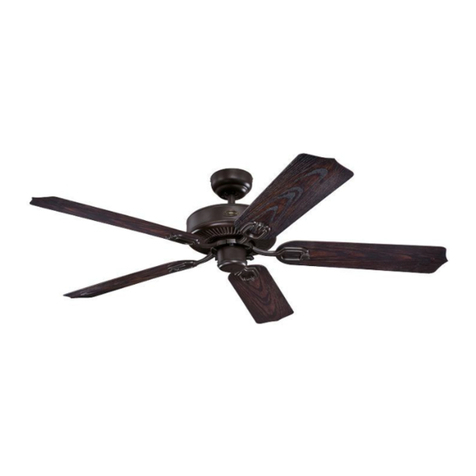
Westinghouse
Westinghouse Saynet-EI-Deacon-WH20 owner's manual
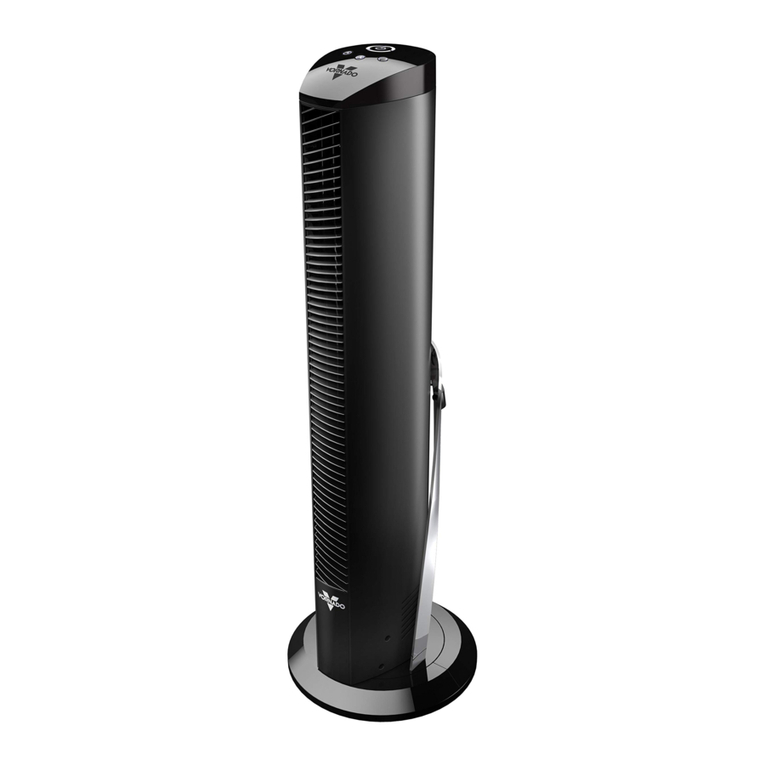
Vornado
Vornado OSCR32 user manual
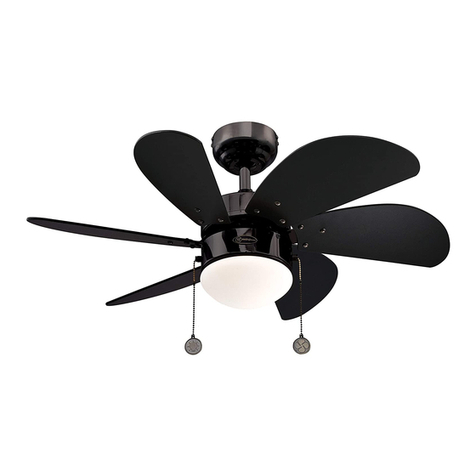
Westinghouse
Westinghouse Turbo Swirl owner's manual

Viking Range
Viking Range VINV1200 user manual

Minka
Minka AIRE URBAIN Instruction manual warranty certificate

Fanimation
Fanimation Stafford PL8274BN owner's manual
